The ‘Tales of’ series of JRPGs have received more than modest acclaim in the west, which is why it came to my surprise how long Tales of Xillia had taken to be localised. The game hit shelves in Japan almost two years ago and has since then already seen a sequel. It’s most common for most JRPG titles to take anywhere from six months to a year to localise, but even for a title this sought after, one can’t imagine what was on Namco Bandai’s mind when delaying this title’s western 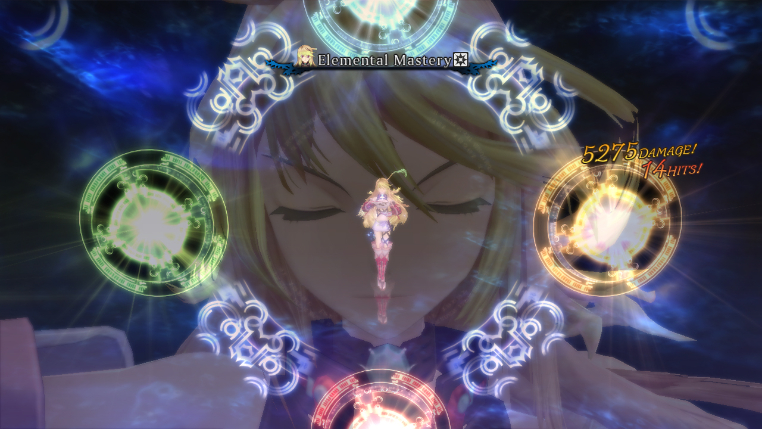 release. Though that being said, Namco Bandai have been noted for their lack of localised titles and poor support for games in the west, especially for larger franchises such as Armoured Core, Dragon Ball Z and Gundam. Nevertheless, the wait is now over and at first glance Tales of Xillia may prove to be the series’ firm foothold into the Western market, paving the way for more JRPG goodness from them in the near future.
release. Though that being said, Namco Bandai have been noted for their lack of localised titles and poor support for games in the west, especially for larger franchises such as Armoured Core, Dragon Ball Z and Gundam. Nevertheless, the wait is now over and at first glance Tales of Xillia may prove to be the series’ firm foothold into the Western market, paving the way for more JRPG goodness from them in the near future.
At the start of the game, the player is given the choice to play as either one of two main protagonists. Depending on which one is selected, different alterations of cutscenes will be played throughout the game focusing more on the character of choice, though the overall story remains the same for each. Players will find themselves making a closer connection to the character of their choice, so are recommended to pick wisely, especially if they don’t want to play the main quest over a second time. I personally find both characters equally interesting and advise playing a little of each to get to know them better before making this decision. Milla is the embodiment of a goddess, who after losing her power, becomes almost human and has to learn to survive without the benefits of being a deity. She’s on an grand mission to stop a global superpower from ignorantly possessing technology beyond their comprehension. Willingly joining her is a multi-talented medical student, Jude, who becomes passionate in proving himself to Milla, who starts to become reliant on his abilities and local knowledge. Both characters truly complement each other because of this and are given very real and very different intentions. What really makes the presentation unique is the addition of optional conversations which are activated by pressing the Select 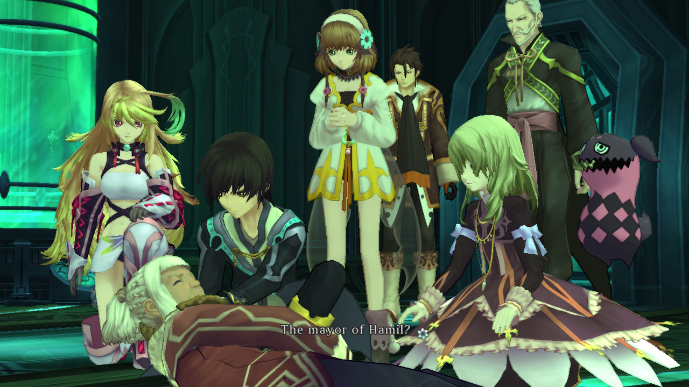 button at almost any time. These short intervals have the characters tell their back stories, explain key items and events, and sometimes just have the characters connect with each other with quirky dialogue. It is an added bonus which helps the player get comfortable with the game lore and characters.
button at almost any time. These short intervals have the characters tell their back stories, explain key items and events, and sometimes just have the characters connect with each other with quirky dialogue. It is an added bonus which helps the player get comfortable with the game lore and characters.
Both returning players and those unfamiliar with the series will value the fast and fluid battle system. Instead of your typical turn based combat, the fights in Xillia are dynamic and fought in real time, more akin to a third person hack-and-slash, which while making battles more exciting, unfortunately endorses too much button mashing, especially against weaker mobs. It follows a similar formula to its predecessors and makes a valiant attempt at adding to the mix, without making it too complicated. The player is given a handful of tutorial fights which introduce the basics then continues onto the good stuff. Primarily, battles will involve combination of basic attacks and magical abilities called Artes. One of biggest introductions to the battle system is Linking, which has two characters mentally connect to each other simply by using the D-Pad. This increases efficiency, damage output and allows the player to perform improved combos. Linked characters will also find themselves using support Artes on each other. It is encouraged very early on in the game, as stronger monsters require that boost you get from using it.
Each party member possesses a Lillium Orb, the centre of the games level system. The orb is surrounded by connected nodes which forms a hexagonal web. GP is awarded each time a player levels up and can spend it on each node, corresponding to the desired stat to increase. For players that enjoy micromanagement in RPGs, this provides a lot of freedom. Those who don’t will be able to auto-level their characters with the Select button. This is ill-advised as it makes it more difficult to keep track of characters later in the game. Additionally, bonuses can be unlocked for joining its surrounding nodes, these provide the character with both active and passive abilities, and brand new Artes, promoting both specialisation and diversity for different characters and player preferences.
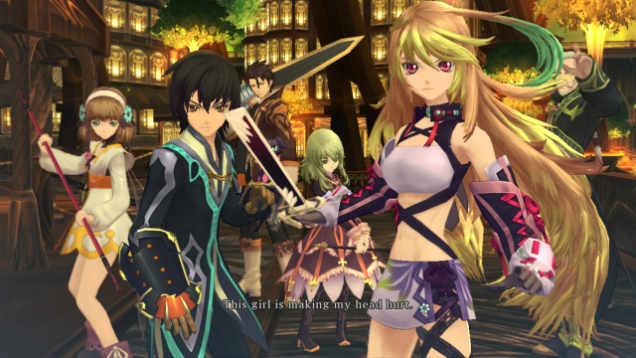 Another mechanic that deviates from other JRPGs is the shop upgrading. Players will come across a vast array of items which can be turned into experience for levelling up each store. Higher levels give the player access to more useful weapons, armour, items and accessories. Players are no longer restricted to a handful of new items in every shop and are free to choose the pace in which they wish to upgrade their party’s equipment.
Another mechanic that deviates from other JRPGs is the shop upgrading. Players will come across a vast array of items which can be turned into experience for levelling up each store. Higher levels give the player access to more useful weapons, armour, items and accessories. Players are no longer restricted to a handful of new items in every shop and are free to choose the pace in which they wish to upgrade their party’s equipment.
From the very beginning, it’s easy to realise how bland, unoriginal and repetitive the linear game world is. Building interiors lack diversity, and some smaller residences appear to be carbon copies of one another. Areas outside of towns are often very quiet and open, lacking substance, and do a poor job of making the world feel immense. The only will to explore comes from the completion of sub quests and maybe the odd item in the corner of your vision. The characters, however, are beautifully drawn, the game doing a good job of capturing their anime forms from the opening video. Character animations are okay at best when in conversation, and improve in the more important cutscenes. Battle animations are amazingly slick, even for the basic attacks. This really helps make fighting the same group of monsters a little less tedious.
The soundtrack goes well with the overall moods of the game, providing a pleasant ambience when outside of battle, which is nice to have when you dedicated quite some time to the Lithium Orbs and sub quests. The music in battle is upbeat and memorable, and also makes fighting mobs a lot less monotonous. The voice acting is amazing, with most of the characters feelings well expressed through their lacklustre animations. Milla’s voice could be criticised as sounding emotionless, but I feel it suits her deadpan attitude and provides the kind of awkwardness you would expect from having an inexperienced goddess in your party.
Tales of Xillia takes the tried and tested elements of a JRPG and succeeds in making itself a fairly unique, all-round experience. While it executes most of these successfully, I find that there are other games in the genre that do each of them better. Those looking for an RPG with high-quality mechanics, be sure to pick this up. Nevertheless, the story and characters might be enough to carry the game for someone new to the series or to JRPGs. Furthermore with the sequel’s western release announced for 2014, there’s less of a wait, justifying a purchase right now, as the game provides at least forty hours of play time.
Disclaimer:All scores given within our reviews are based on the artist’s personal opinion; this should in no way impede your decision to purchase the game.

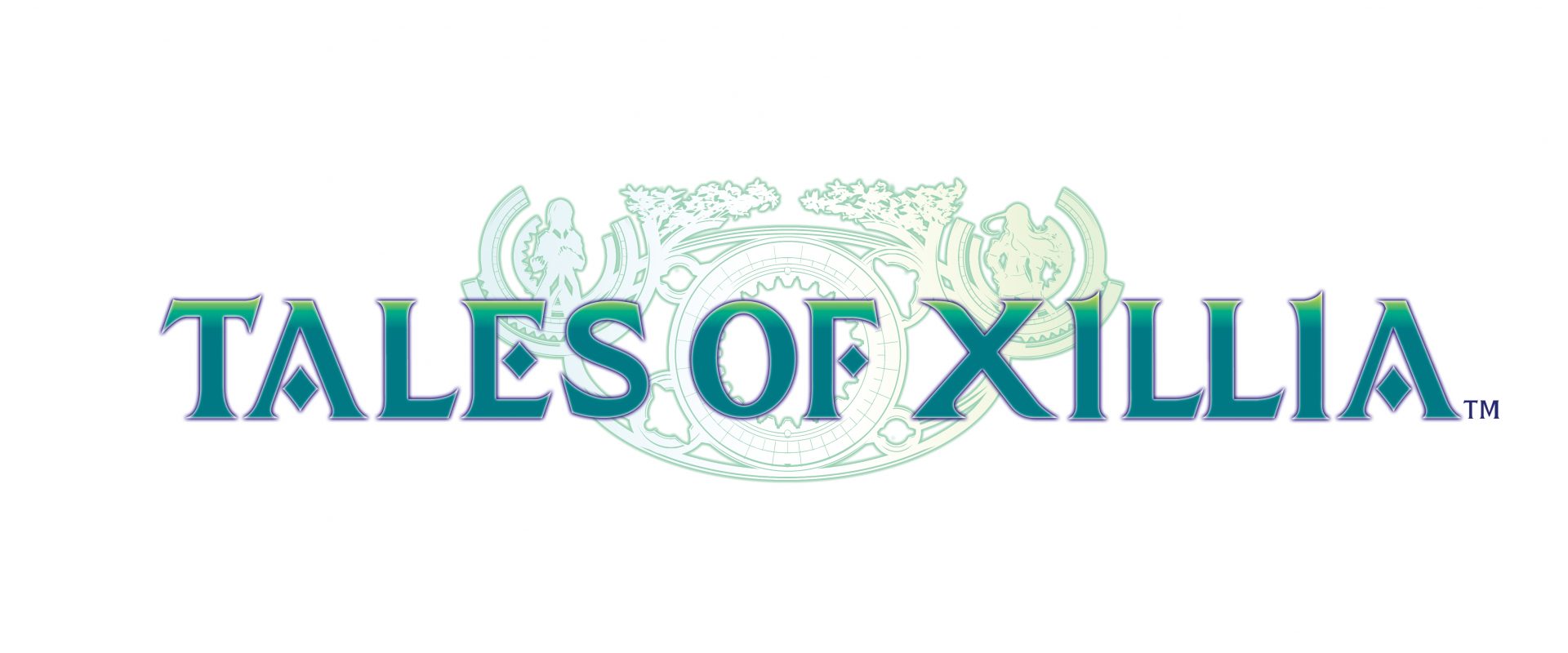
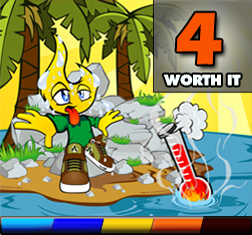






You must be logged in to post a comment.